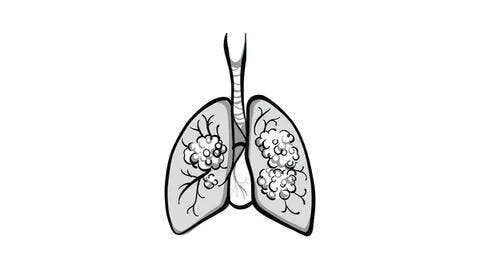Clinical Commentary: Kuykendall Examines Data Supporting Use of Pacritinib in High-Risk Primary Myelofibrosis
At a live virtual event, Andrew Kuykendall, MD, discussed the rationale and data for the use of pacritinib in patients with high-risk primary myelofibrosis.

Andrew Kuykendall, MD
Assistant Member
Department of Malignant Hematology
Moffitt Cancer Center Tampa, FL

[There has been] a recent change in our understanding, like all things, that comes with having emerging medications that might be able to contribute to [treatment of] these more cytopenic patients. In the past, it wasn’t helpful to differentiate, because we didn’t have too many options, but it’s something that’s certainly growing in awareness. We often see that this proliferative phenotype is more consistent and almost resembles something like polycythemia vera or essential thrombocythemia.
On the other hand, we have the cytopenic phenotype, which is considered more aggressive from prognostic modeling and just overall outcomes, and perhaps that’s because we’re dealing with more mutations.1 It’s a more complex picture and a less effective treatment, so it’s something I think we will hear more about as we go forward in the next few years as we try to get a better understanding of these patients.
I also think they can be 2 different diseases, but they’re 2 different kinds of phenotypes of a disease, and I think you can switch from one to another. Certainly you can have patients [who] present as cytopenic enough [with] typically just splicing mutations—more myelodysplastic syndrome-like mutations in conjunction with a JAK2 mutation—[who] tend to [also] present with lower platelet counts.2
[However], you can also have a patient [who] has more proliferative disease and then acquires new mutations, [which] contribute to this more cytopenic disease. Either way, you’re dealing with a more complex disease, with more mutations and bigger challenges to deal with as far as treatment goes. [In higher-risk patients], we have this decision point based on the platelets. [For a patient with] platelets greater than 50 × 109 /L [who is] a transplant candidate, we certainly recommend going forward with that.3
The Role of Pacritinib
When patients have [a platelet count] less than 50,000, we used to say transplant was the only option, but now we have this emerging evidence for pacritinib, which is becoming more utilized. Pacritinib was added with a more recent update for patients with less than 50,000 platelets, but it also was added as a potential second-line option.4
When we talk about JAK inhibition, we have 3 approved therapies: ruxolitinib, fedratinib, and pacritinib.5-7 All [these] have similarities in the sense that they inhibit JAK2, but they have some unique aspects. Ruxolitinib is a JAK1 and JAK2 inhibitor, fedratinib is mostly a JAK2 inhibitor but has some FLT3 inhibition, and pacritinib [also] has JAK2 and FLT3 inhibition, so these are more selective JAK2 inhibitors.
Pacritinib also has potential relevance in the sense that it inhibits CSF1R and IRQ1, and maybe this has some relevance as to how this is less myelosuppressive.8 Indications are similar for ruxolitinib and fedratinib, but pacritinib requires moderate thrombocytopenia, then the dosing is a stable flat dose for fedratinib and pacritinib. So 400 mg once daily for fedratinib, recommended to take with food to decrease some of this GI [gastrointestinal] toxicity.
Pacritinib [has the] same [recommendation regarding] being taken with food, but it’s given at 200 mg twice daily. Ruxolitinib is based on the platelet count, where there’s this dynamic dosing strategy to avoid causing severe thrombocytopenia. For patients with a platelet count of 50,000 to 100,000, [use] 50 mg twice a day. [If they have more than] 200,000 platelets, [use] 20 mg twice a day. Ruxolitinib has an inhibition of JAK1 and JAK2, but pacritinib [has] quite a difference between JAK1 and JAK2, and fedratinib is somewhere in between.
When you look at the impact of what not hitting JAK1 might be, JAK1 has a role in megakaryocytes releasing platelets, so if you inhibit that you tend to inhibit [not only] megakaryocyte maturation but also the release of platelets. If you don’t hit that, then maybe you’re just inhibiting megakaryopoiesis, but you’re not necessarily inhibiting the platelet production or the thrombopoiesis. Perhaps that’s why pacritinib is a little bit better tolerated in terms of platelet counts.
Highlights of the PERSIST Trials
PERSIST-1 [NCT01773187] was a frontline trial that looked at pacritinib in patients with any platelet count, but they couldn’t have had prior JAK inhibitors. [Patients were randomly assigned] 2:1 to pacritinib at 400 mg daily, which is not the recommended dose, vs the best available therapy [BAT], but the BAT could not be ruxolitinib.9 [The study then] looked at a primary end point of 35% [spleen volume reduction (SVR) at week 24].
For various reasons, we don’t look too much at PERSIST-1 now, because it’s kind of an obsolete dosing strategy. It doesn’t compare directly with ruxolitinib and doesn’t include prior ruxolitinib. [However], the PERSIST-2 study [NCT02055781] certainly has some relevance; it enrolled patients with thrombocytopenia [and] less than 100,000 platelets, and they were allowed to have had prior JAK inhibitor therapy.10
Patients were [randomly assigned] 1:1:1 to 2 different doses of pacritinib vs BAT, which could include ruxolitinib, then they looked at coprimary end points of spleen volume response and symptom response. When you look at the baseline demographics of this study, the important thing everyone wants to know is how much of BAT was ruxolitinib, and [approximately] 44% of patients received ruxolitinib as BAT.
Then when you look at the risk scores [of patients on this trial], it was more of an intermediate- to high-risk group, [with just over 50% in both groups being categorized as intermediate-2 risk scores]. The overall patient population was quite similar, but [approximately] 42% [in the pacritinib group] had platelets that were less than 50 × 109 /L, and this is certainly the indication that it has now.
When you look at SVR at week 24 [for patients on the now] recommended dose of 200 mg twice daily, patients on pacritinib compared [with] BAT were more likely to achieve SVR at 29%, especially in those patients with less than 50×109 /L platelets, compared [with] 3.1% in those patients [who] had BAT. It had quite a striking absolute difference between the 2 groups, at 25.9% [95% CI, 4.3%-44.5%].
When assessing the patients’ total symptom score [TSS], 32% of patients in the pacritinib arm compared [with] 14% in the BAT arm were able to achieve a TSS response of at least a 50% decrease in the symptoms.
[When looking specifically at the patients who had prior ruxolitinib as BAT], it seems like most of [them] were getting improvement in symptoms, albeit not to that 50% threshold, which may go along with the fact that they were getting suboptimal dosing. Furthermore, when we look at individual symptom scores in pacritinib vs BAT, across the board it seems to be that [those] in the thrombocytopenic patient population were getting better symptom improvement with pacritinib compared [with] BAT as well.
Reactions to Pacritinib
When considering red blood cell transfusions over time, we often think about pacritinib being used in this low-platelet population. You can compare pacritinib at 400 mg with 200 mg [with] BAT at baseline, and it looks like the BAT arm was getting [some] more transfusions on median number of transfusions for a month. [However], after week 12, the number of transfusions in the 200-mg twice daily arm decreases, whereas the number of infusions increases in the BAT arm.
Then at week 24, it decreases again in the pacritinib arm. Over time, [patients] on pacritinib—even those thrombocytopenic patient populations—are experiencing [fewer] red blood cell transfusions. When you look at the platelet counts and the trend over time, it appears that patients on pacritinib have a stable platelet count over these 24 to 36 weeks.
[Looking at adverse reactions to the therapy, there is still] the signal for GI toxicity. This often happens when [therapies] hit FLT3, as pacritinib does, like fedratinib. There is only 4% of patients in the pacritinib arm with grade 3 or greater diarrhea, but there is still a significant amount of diarrhea in [approximately] 50% of patients, [which is] much more than those on BAT.
We’re seeing a little more of other adverse reactions in pacritinib vs BAT: thrombocytopenia [34% vs 23%, respectively], nausea [32% vs 11%], anemia [24% vs 15%], edema [20% vs 15%], and vomiting [19% vs 5%]. The take-home message here is that there is more GI toxicity in some patients’ myelosuppression, although to a much milder extent than what we saw previously with ruxolitinib and fedratinib.
REFERENCES
1. Marcellino BK, Verstovsek S, Mascarenhas J. The myelodepletive phenotype in myelofibrosis: clinical relevance and therapeutic implication. Clin Lymphoma Myeloma Leuk. 2020;20(7):415-421. doi:10.1016/j. clml.2020.01.008
2. Tefferi A, Lasho TL, Jimma T, et al. One thousand patients with primary myelofibrosis: the Mayo Clinic experience. Mayo Clin Proc. 2012;87(1):25-33. doi:10.1016/j.mayocp.2011.11.001
3. Gerds AT, Gotlib J, Ali H, et al. Myeloproliferative neoplasms, version 3.2022, NCCN Clinical Practice Guidelines in Oncology. J Natl Compr Canc Netw. 2022;20(9):1033-1062. doi:10.6004/jnccn.2022.0046
4. Diaz AE, Mesa RA. Pacritinib and its use in the treatment of patients with myelofibrosis who have thrombocytopenia. Future Oncol. 2018;14(9):797- 807. doi:10.2217/fon-2017-0494
5. Raedler LA. Jakafi (ruxolitinib): first FDA-approved medication for the treatment of patients with polycythemia vera. Am Health Drug Benefits. 2015;8(spec feature):75-79.
6. FDA approves fedratinib for myelofibrosis. FDA. August 16, 2019. Accessed February 1, 2023. https://bit.ly/3I5BhWj
7. CTI BioPharma announces FDA accelerated approval of VONJO (pacritinib) for the treatment of adult patients with myelofibrosis and thrombocytopenia. News release. CTI BioPharma Corp. February 28, 2022. Accessed February 2, 2023. https://prn.to/33ZY8lU
8. Development overview. CTI BioPharma Corp. Accessed February 2, 2023. https://bit.ly/3jLjQC7
9. Results of the PERSIST-1 phase III study of pacritinib (PAC) versus best available therapy (BAT) in primary myelofibrosis (PMF), post-polycythemia vera myelofibrosis (PPV-MF), or post-essential thrombocythemia-myelofibrosis (PET-MF). J Clin Oncol. 2015;33(suppl 18):LBA7006. doi:10.1200/ JCO.2015.33.18_suppl.lba7006
10. Mascarenhas J, Hoffman R, Talpaz M, et al. Pacritinib vs best available therapy, including ruxolitinib, in patients with myelofibrosis: a randomized clinical trial. JAMA Oncol. 2018;4(5):652-659. doi:10.1001/ jamaoncol.2017.5818



















